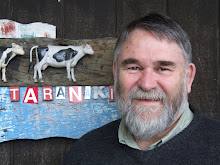 Robbie Duncan works magic, getting the best from people and from sound. I talked with him about the creativity involved in doing that at his Braeburn Recording Studio.
Robbie Duncan works magic, getting the best from people and from sound. I talked with him about the creativity involved in doing that at his Braeburn Recording Studio.“No matter where you are on the creativity scale the question is how do you get better than that? First of all do you want to get better?
My creative process is to do with play – that’s how I learn – I try 99 things and 99 things don’t work and the 100th thing – I’ve now got it! I’ll just keep on. How do you cope with so much failure – by enjoying the process and that’s where play comes in. It’s the Edison thing – it’s not failure, it’s just another step on the way to getting it sorted. So play is definitely part of it.
But there is another thing in the creative process and that is how do you develop beyond yourself? Once you’ve written that book, written that song, done that painting, recorded that album – how do you then do something else? Some people are happy to write the same book, paint the same picture but most creative people want to go further. I guess its about challenge.
So how do you get beyond your habitual way of doing things. I think play is apart of that too – but I guess it is intentional play. I want to get over there. being open to the process and open to the doors that show themselves.
Another aspect I’m beginning to understand is working within constraints. Why do poets do sonnets? Certain disciplines and sometimes working within the discipline gives you freedom as well. Because there is a large world out there some people are like moths to a flame – they’ll never develop – they’re just going off in whatever direction. So I did The Sound of the Sound album for that reason – to grow beyond my habitual way of doing things. I used tunings I never used before. It’s like building a vocabulary, then learning to talk, then turning off conscious thought then just making it up within the discipline of the tuning I had created. The tuning was the language.
Working with clients – there’s budget restraints and then there’s [perfection – what stage do you say this is good enough. All sorts of decisions – When is the picture painted? When is the album done?
My advice to others? If you’re looking at your art, your craft, your life I would say have fun. You’re not going to be creative if you don’t want to be. So first of all you have to want to be then have fun and then – part of having fun is not doing badly – the more you do it the better you become so part of it is do it, do it, do it, do it but don’t be a perfectionist about – but have high standards. The first thing is to get better than you are - challenge yourself. One way of doing that is working within constraints then finding new constraints."


















